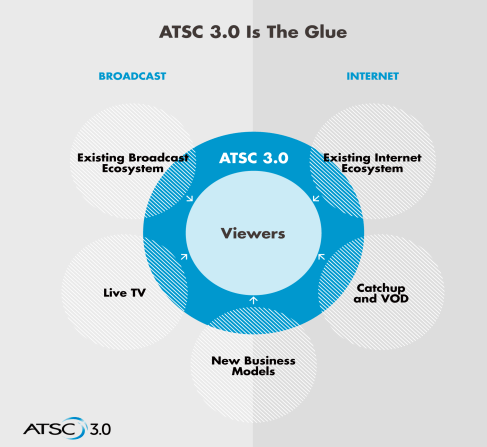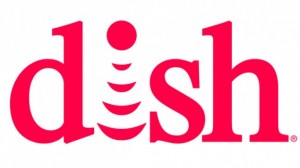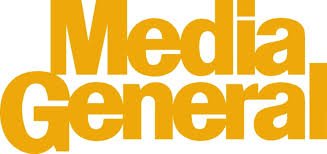An unprecedented 175 free over-the-air television signals will sign off on their current channels for good in return for an average of tens of millions in compensation paid by Comcast, Dish Networks, and various wireless companies that want their frequencies to bolster their mobile networks.
The UHF dial compression comes courtesy of the latest FCC spectrum auction, which allowed bidders to entice over-the-air television stations to give up their frequencies to make room for wireless companies trying to bolster their 4G LTE networks. At least 957 stations across the country will have to move to new channels as the FCC compresses the TV dial to make room for wireless providers.
Virtually all the affected stations won’t disappear from free over-the-air TV for good, however. Of the 175 stations, 133 plan to make a deal with another local station to relaunch as a secondary digital channel, 29 will move from a UHF channel to a new VHF channel (2-13), and one channel will move from a high VHF channel to a low numbered one.
The move was very profitable to some major market stations, where the TV dial is already crowded with signals. WWTO-TV, a TBN affiliate airing Christian TV programming in LaSalle/Chicago, Ill. won the highest amount of any station in the country to put its transmitter off the air – $304 million. The biggest non-commercial auction winner was New Jersey’s Public Broadcasting Authority, which won $194 million to switch off WNJN in Montclair, N.Y.
The winners are 50 wireless bidders who want the frequencies to improve their wireless networks by increasing the amount of spectrum they can use in the coveted 600MHz band. Signals at these frequencies do a better job penetrating buildings and around natural obstacles and terrain. The result will be improved coverage and signal quality, with fewer dropped calls.
“The conclusion of the world’s first incentive auction is a major milestone in the FCC’s long history as steward of the nation’s airwaves,” said FCC chairman Ajit Pai. “Consumers are the real beneficiaries, as broadcasters invest new resources in programming and service, and additional wireless spectrum opens the way to greater competition and innovation in the mobile broadband marketplace.”
Stations can begin vacating their frequencies this year. Among the 957 stations that have to change channel numbers, the first of a series of channel changes will begin on Nov. 30, 2018. The last changes should take place just over three years from now.
Are you affected? Here is the list of channels going off the air or relocating to a different band:
Albany-Schenectady-Troy, N.Y.
- WCDC-TV UHF Going off the air
Augusta, Ga.
- WAGT-TV UHF Going off the air
Baltimore, Md.
- WUTB-TV UHF Going off the air
Boston, Mass.
- WBIN-TV UHF Going off the air
- WDPX-TV UHF Going off the air
- WFXZ-CD UHF Going off the air
- WGBH-TV UHF Moving to Low VHF Channel
- WLVI-TV UHF Going off the air
- WMFP-TV UHF Going off the air
- WYCN-CD UHF Going off the air
- WYDN-TV UHF Going off the air
Buffalo, N.Y.
- WIVB-TV UHF Going off the air
- WNYB-TV UHF Moving to Low VHF Channel
- WVTT-CD UHF Moving to High VHF Channel
Burlington, Vt.-Plattsburgh, N.Y.
- WNNE-TV UHF Going off the air
- WVTA-TV UHF Going off the air
Charleston-Huntington, W.V.
- WPBO-TV UHF Going off the air
- WTSF-TV UHF Moving to High VHF Channel
Charlotte, N.C.
- WLNN-CD UHF Going off the air
- WMYT-TV UHF Going off the air
- WTBL-CD UHF Going off the air
Charlottesville, Va.
- WVIR-TV UHF Moving to Low VHF Channel
Chattanooga, Tenn.
- WNGH-TV UHF Moving to Low VHF Channel
- WTNB-CD UHF Moving to Low VHF Channel
Chicago, Ill.
- WOCH-CD UHF Going off the air
- WPWR-TV UHF Going off the air
- WSNS-TV UHF Going off the air
- WWTO-TV High VHF Channel Going off the air
- WXFT-TV UHF Going off the air
- WYCC-TV UHF Going off the air
Cincinnati, Oh.
- WOTH-CD UHF Going off the air
Cleveland-Akron, Oh.
- WAOH-CD UHF Going off the air
- WDLI-TV UHF Going off the air
- WGGN-TV UHF Moving to Low VHF Channel
- WRLM-TV UHF Going off the air
- WUAB-TV UHF Going off the air
Columbus, Ga.
- WJSP-TV UHF Moving to Low VHF Channel
Columbus, Oh.
- WOUC-TV UHF Moving to Low VHF Channel
- WSFJ-TV UHF Going off the air
Dallas-Ft. Worth, Tex.
- KATA-CD UHF Going off the air
Dayton, Oh.
- WBDT-TV UHF Going off the air
- WKOI-TV UHF Going off the air
Flint-Saginaw-Bay City, Mich.
- WCMZ-TV UHF Going off the air
Greensboro-High Point-Winston, N.C.
- WCWG-TV UHF Going off the air
- WLXI-TV UHF Going off the air
Greenville-New Bern-Washington, N.C.
- WFXI-TV High VHF Channel Going off the air
Greenville-Spartanburg, S.C.
- WGGS-TV UHF Moving to Low VHF Channel
- WRET-TV UHF Going off the air
- WYCW-TV UHF Going off the air
Harrisburg-Lancaster-Lebanon-York, Pa.
- WGCB-TV UHF Going off the air
- WLYH-TV UHF Going off the air
- WPMT-TV UHF Going off the air
Harrisonburg, Va.
- WAZH-CD UHF Going off the air
- WVPY-TV UHF Going off the air
Hartford-New Haven, Conn.
- WCTX-TV UHF Going off the air
- WEDY-TV UHF Going off the air
- WRDM-CD UHF Going off the air
- WUVN-TV UHF Going off the air
Huntsville-Decatur-Florence, Ala.
- WHDF-TV UHF Moving to Low VHF Channel
Indianapolis, Ind.
- WCLJ-TV UHF Going off the air
- WHMB-TV UHF Moving to High VHF Channel
- WNDY-TV UHF Going off the air
Johnstown-Altoona, Pa.
- WKBS-TV UHF Moving to Low VHF Channel
Knoxville, Tenn.
- WAGV-TV UHF Going off the air
Lansing, Mich.
- WHTV-TV UHF Going off the air
- WLNS-TV UHF Going off the air
Lima, Oh.
- WTLW-TV UHF Moving to Low VHF Channel
Los Angeles, Calif.
- KAZA-TV UHF Going off the air
- KBEH-TV UHF Going off the air
- KDOC-TV UHF Moving to High VHF Channel
- KILM-TV UHF Going off the air
- KJLA-TV UHF Going off the air
- KLCS-TV UHF Going off the air
- KNET-CD UHF Going off the air
- KOCE-TV UHF Going off the air
- KRCA-TV UHF Going off the air
- KSFV-CD UHF Going off the air
- KVCR-TV UHF Moving to Low VHF Channel
- KWHY-TV UHF Moving to Low VHF Channel
Louisville, Ky.
- WBKI-TV UHF Going off the air
- WWJS-CD UHF Going off the air
Madison, Wisc.
- WISC-TV UHF Moving to High VHF Channel
Memphis, Tenn.
- WWTW-TV UHF Going off the air
Miami-Ft. Lauderdale, Fla.
- WDLP-CD UHF Going off the air
- WIMP-CD UHF Going off the air
- WLPH-CD UHF Going off the air
Milwaukee, Wisc.
- WCGV-TV UHF Going off the air
- WMLW-TV UHF Going off the air
- WMVT-TV UHF Going off the air
- WVCY-TV UHF Going off the air
Minneapolis-St. Paul, Minn.
- KCCO-TV High VHF Channel Going off the air
Monterey-Salinas, Calif.
- KSMS-TV UHF Going off the air
Myrtle Beach-Florence, S.C.
- WGSI-CD High VHF Channel Going off the air
New York, N.Y.
- WEBR-CD UHF Going off the air
- WMBQ-CD UHF Going off the air
- WMUN-CD UHF Going off the air
- WNBC-TV UHF Going off the air
- WNJN-TV UHF Going off the air
- WNYJ-TV UHF Going off the air
- WRNN-TV UHF Going off the air
- WTBY-TV UHF Going off the air
- WXTV-TV UHF Going off the air
- WZME-TV UHF Going off the air
Orlando-Daytona Beach-Melbourne, Fla.
- WACX-TV UHF Moving to High VHF Channel
- WTGL-TV UHF Going off the air
Philadelphia, Pa.
- WFMZ-TV UHF Going off the air
- WGTW-TV UHF Going off the air
- WLVT-TV UHF Going off the air
- WMCN-TV UHF Going off the air
- WNJT-TV UHF Going off the air
- WTSD-CD UHF Going off the air
- WTVE-TV UHF Going off the air
- WUVP-TV UHF Going off the air
- WWSI-TV UHF Going off the air
- WYBE-TV UHF Going off the air
Pittsburgh, Pa.
- WBOA-CD UHF Going off the air
- WEMW-CD UHF Going off the air
- WEPA-CD UHF Going off the air
- WNNB-CD UHF Going off the air
- WPCP-CD UHF Going off the air
- WQED-TV High VHF Moving to Low VHF Channel
- WQVC-CD UHF Going off the air
- WVTX-CD UHF Going off the air
Providence, R.I.-New Bedford, Mass.
- WLWC-TV UHF Going off the air
- WRIW-CD UHF Going off the air
- WSBE-TV UHF Moving to Low VHF Channel
Puerto Rico
- WDWL-TV UHF Going off the air
- WELU-TV UHF Going off the air
- WIRS-TV UHF Going off the air
- WKPV-TV UHF Going off the air
- WMEI-TV UHF Going off the air
- WSJU-TV UHF Going off the air
- WTCV-TV UHF Going off the air
Raleigh-Durham, N.C.
- WFPX-TV UHF Going off the air
- WHFL-CD UHF Moving to High VHF Channel
- WNCN-TV UHF Moving to High VHF Channel
- WRAY-TV UHF Going off the air
- WZGS-CD UHF Going off the air
Richmond-Petersburg, Va.
- WUPV-TV UHF Moving to High VHF Channel
Roanoke-Lynchburg, Va.
- WFFP-TV UHF Going off the air
Rockford, Ill.
- WIFR-TV UHF Going off the air
San Diego, Calif.
- K35DG-TV UHF Going off the air
- KSEX-CD UHF Going off the air
San Francisco-Oakland-San Jose, Calif.
- KEMO-TV UHF Going off the air
- KEXT-CD UHF Going off the air
- KMPT-TV UHF Going off the air
- KOFY-TV UHF Going off the air
- KQEH-TV UHF Going off the air
- KRCB-TV UHF Moving to Low VHF Channel
- KRON-TV UHF Moving to High VHF Channel
- KTLN-TV UHF Going off the air
- KTNC-TV UHF Going off the air
- KTSF-TV UHF Going off the air
Santa Barbara-Santa Maria-San Caballero, Calif.
- KMMA-CD UHF Going off the air
Springfield, Mo.
- KSPR-TV UHF Going off the air
Springfield-Holyoke, Mass.
- WGBY-TV UHF Moving to High VHF Channel
Syracuse, N.Y.
- WNYI-TV UHF Moving to High VHF Channel
Tampa-St. Petersburg-Sarasota, Fla.
- WUSF-TV UHF Going off the air
- WTTA-TV UHF Going off the air
Tri-Cities, Tenn.
- WAPG-CD UHF Going off the air
- WMSY-TV UHF Going off the air
- WSBN-TV UHF Going off the air
Tyler-Longview, Tex.
- KCEB-TV UHF Going off the air
Washington, D.C.
- WAZF-CD UHF Going off the air
- WDCA-TV UHF Going off the air
- WDCW-TV UHF Going off the air
- WJAL-TV UHF Going off the air
- WMDO-CD UHF Going off the air
- WNVC-TV UHF Going off the air
- WNVT-TV UHF Going off the air
- WZDC-CD UHF Going off the air
West Palm Beach-Ft. Pierce, Fla.
- WFGC-TV UHF Moving to High VHF Channel
- WXEL-TV UHF Going off the air
Wilkes Barre-Scranton, Pa.
- WKBN-TV UHF Going off the air
- WVIA-TV UHF Going off the air


 Subscribe
Subscribe
 Frontier Communications has told Sinclair Broadcast Group the asking price to renew carriage of the Tennis Channel and several Sinclair over-the-air stations is too rich for their blood, and as a result will drop the channels Jan. 1, 2017.
Frontier Communications has told Sinclair Broadcast Group the asking price to renew carriage of the Tennis Channel and several Sinclair over-the-air stations is too rich for their blood, and as a result will drop the channels Jan. 1, 2017. If you cut the cord and are watching all of your HD programming over-the-air, we have some bad news. Your current television set will soon be obsolete.
If you cut the cord and are watching all of your HD programming over-the-air, we have some bad news. Your current television set will soon be obsolete. To avoid a firestorm from the public, some station owners are thinking about a stop-gap measure that would launch a “digital bouquet” of participating local stations using lower bit rate Standard Definition on a single legacy ATSC 1.0 transmitter for at least a year or two until consumers upgrade their existing equipment. Then, one by one, existing HD stations would switch to ATSC 3.0 and effectively disappear from the dial of sets made before 2016. The good news is you would still have access to free television. The bad news is the picture will be significantly degraded.
To avoid a firestorm from the public, some station owners are thinking about a stop-gap measure that would launch a “digital bouquet” of participating local stations using lower bit rate Standard Definition on a single legacy ATSC 1.0 transmitter for at least a year or two until consumers upgrade their existing equipment. Then, one by one, existing HD stations would switch to ATSC 3.0 and effectively disappear from the dial of sets made before 2016. The good news is you would still have access to free television. The bad news is the picture will be significantly degraded. More than five million Dish Network customers in 36 states can
More than five million Dish Network customers in 36 states can 
 Greenfield was right.
Greenfield was right. Mediacom subscribers in 15 cities lost 16 Media General-owned over the air stations from the cable lineup
Mediacom subscribers in 15 cities lost 16 Media General-owned over the air stations from the cable lineup  Mediacom claims Media General was seeking excessive compensation to renew its carriage agreement with the television stations. Customers were told in a letter signed by Tom Curtis that some stations were demanding more than double the old rate to renew the contract.
Mediacom claims Media General was seeking excessive compensation to renew its carriage agreement with the television stations. Customers were told in a letter signed by Tom Curtis that some stations were demanding more than double the old rate to renew the contract.